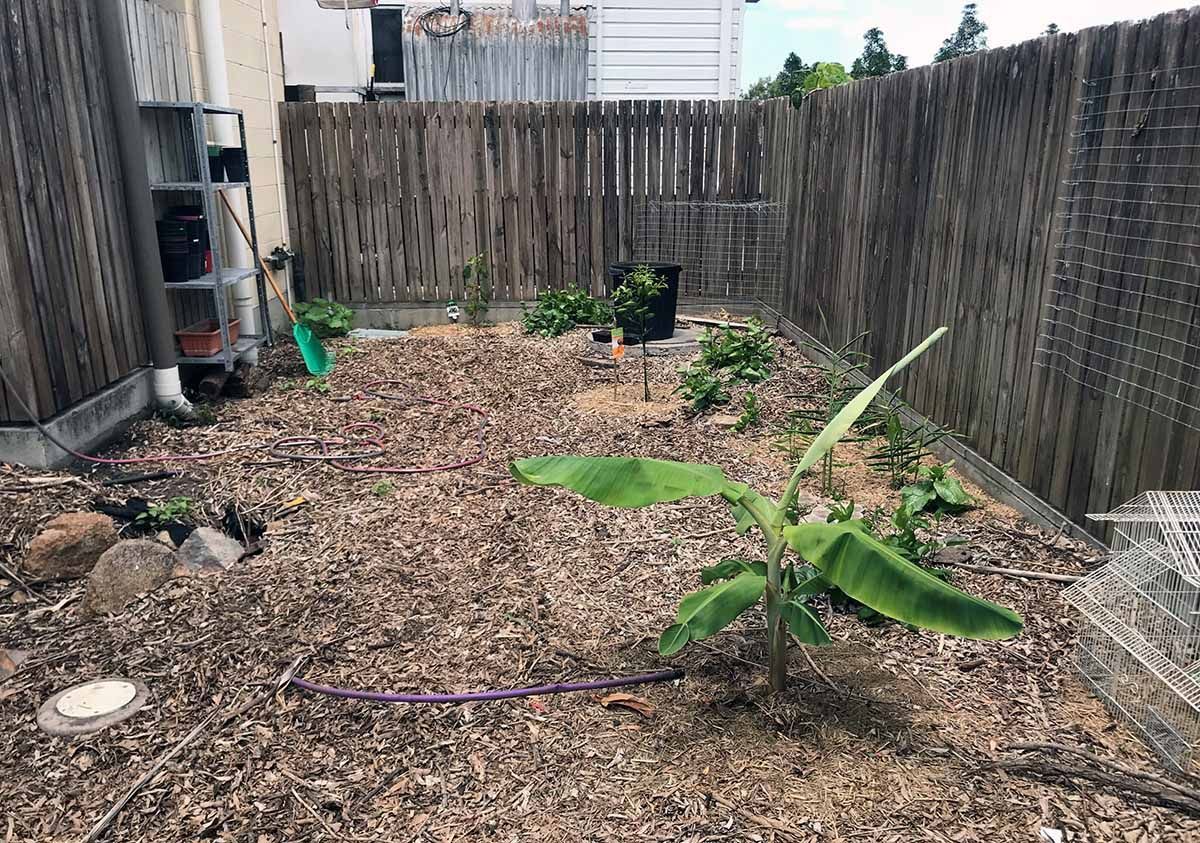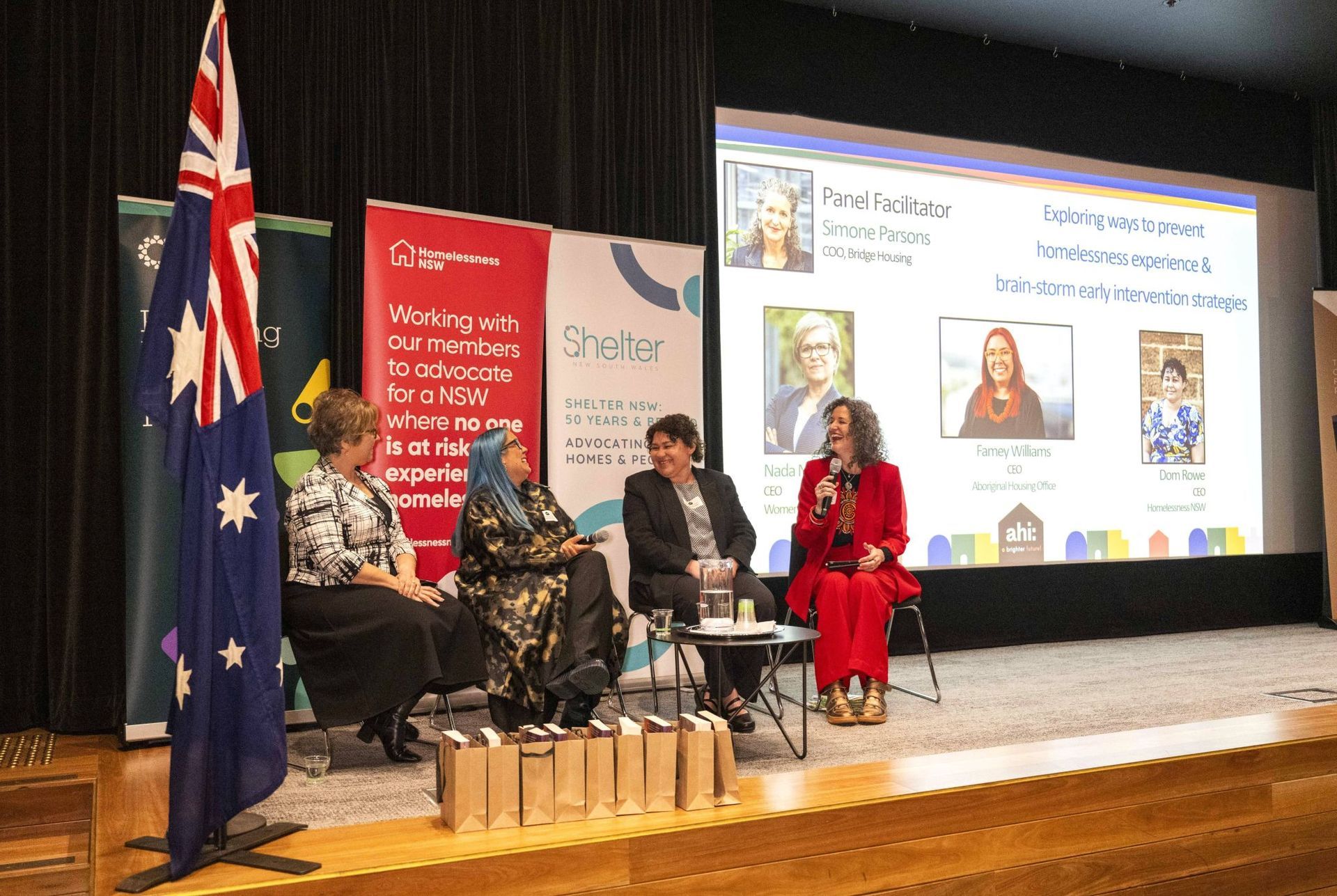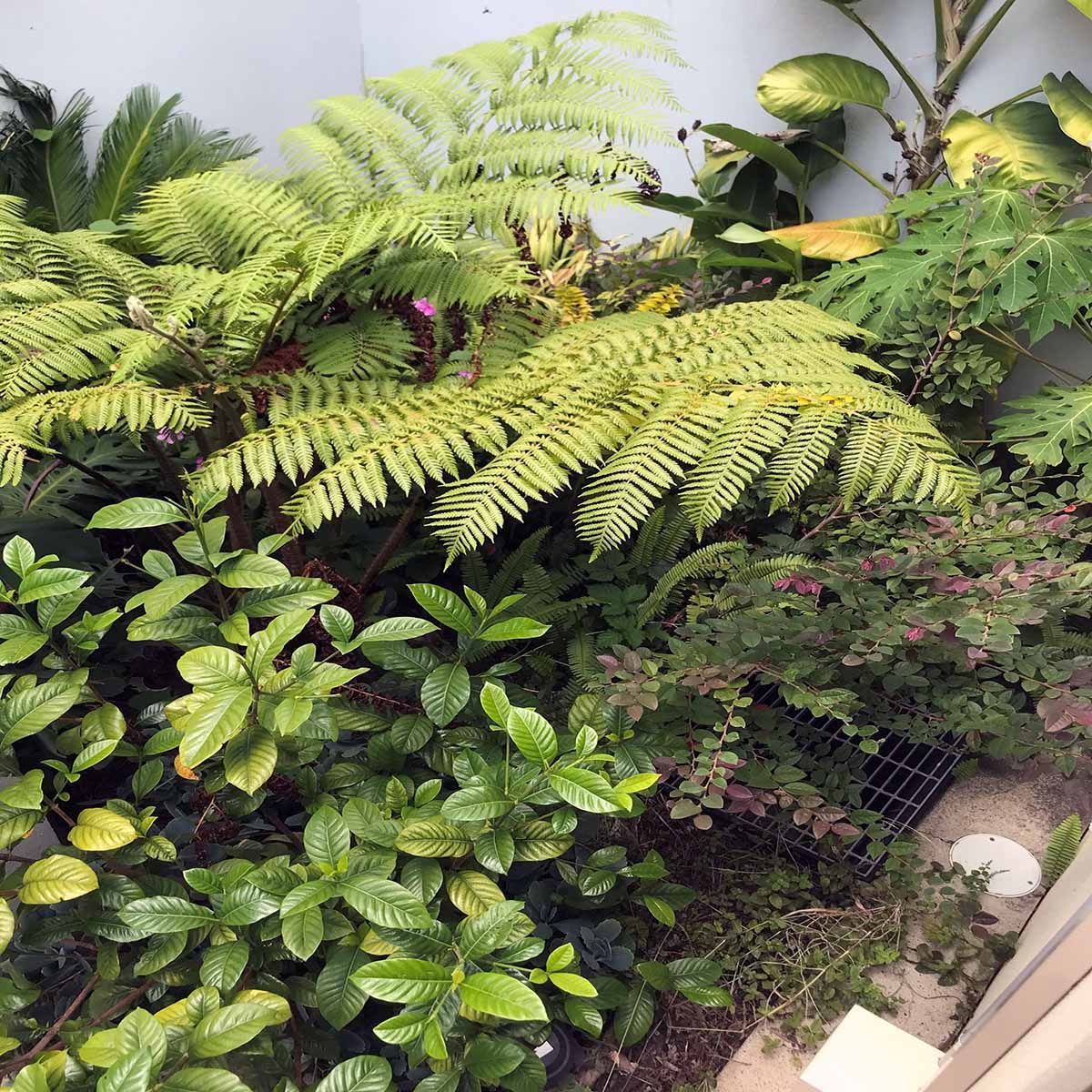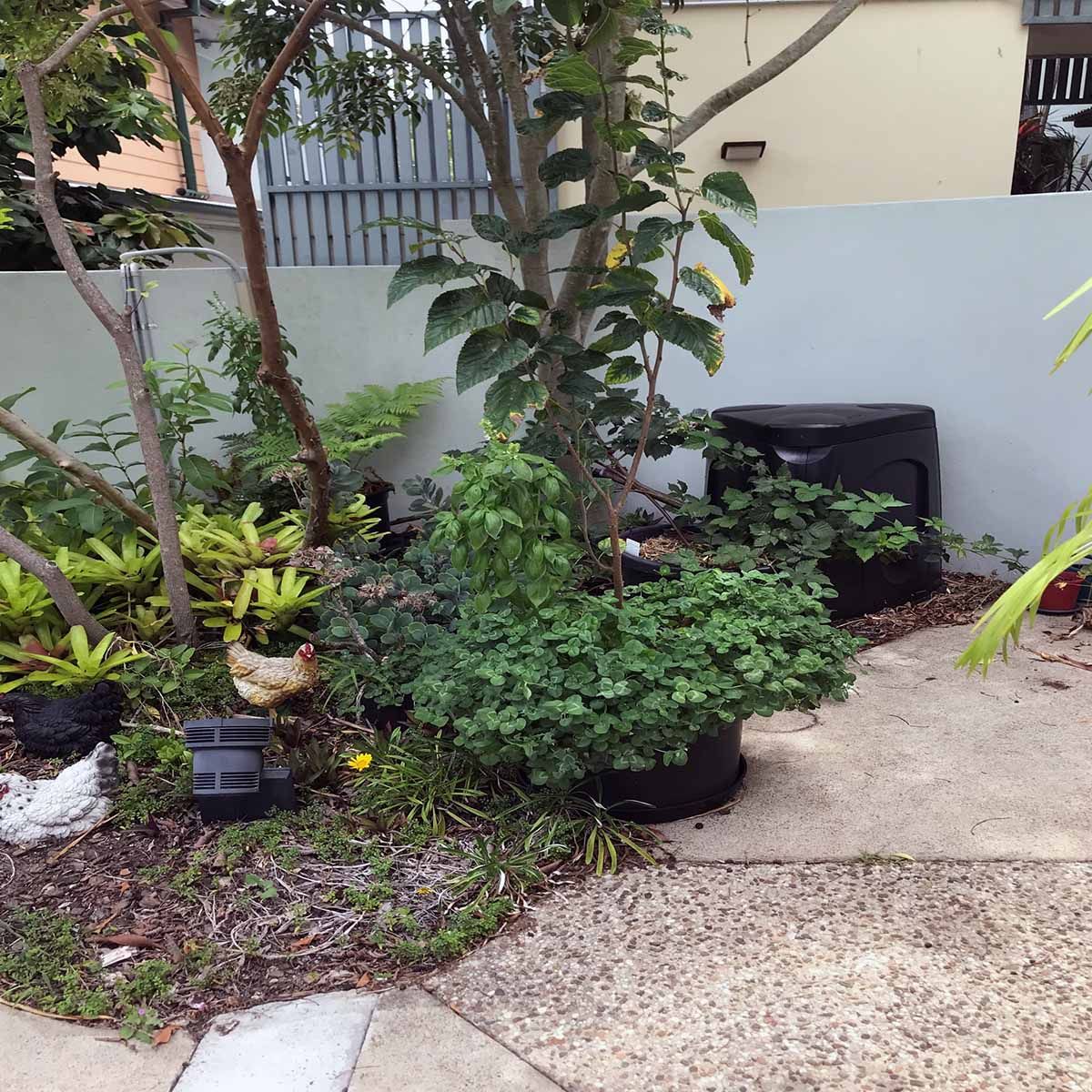Colin Moir's gardening work around the Rainbow Street residential complex is more than just the winning Tenant Led Initiative at the Queensland ahi: Brighter Future Awards 2023; it's a fitting metaphor for revitalisation and renewal. HousingWORKS talks to him.
There's something special about when a tenant community emerges from difficult times to heal and begin a period of reconnection with each other.
“I noticed the neighbours I have below me growing plants and seedlings and their own little vegetable patch on their balconies," says Colin Moir of his current home at the Rainbow Street residential complex in the coast suburb of Sandgate, Brisbane. "I could see that they were interested in gardening."
"One of the neighbours across from us started coming out and putting some plants in the garden with me, and we started talking, and then got chatting with other people. That's sort of like what was going on with the units. I think that's what I was looking at. You could feel this place was healing.”
Colin Moir has been a Bric Housing client for more than five years. Growing up in The Entrance, on the NSW Central Coast, Colin wanted to find a life away from a bad scene that his friends had fallen into.
“I thought, 'Love you all, I've grown up with you', but I just wanted to get away from it. I came up here and, through the process of six months at a men's hostel and another six months at a Bric Housing men's hostel, I got my own unit at [Fortitude] Valley. I then asked for a transfer and moved to Sandgate."
The move to Brisbane’s northern suburbs has impacted for the better on Colin’s life and, if what’s being witnessed is any indication, on the lives of his fellow tenants as well.
"I’d say, 'Oh, morning' and the eyes would stay down, not wanting to really interact."

“Some of the neighbours told me a few stories about how the place went through a real rough stage. I’d see the odd neighbour here and there – some elderly people – and they've got their eyes down. I’d say, 'Oh, morning' and the eyes would stay down, not wanting to really interact. I thought to myself that it seemed like the place was going through a bit of a healing process.”
As a former landscape gardener, concreter and conservationist, the state of some common area gardens at the complex was something Colin couldn’t ignore. Around a year-and-a-half into his tenancy, he decided enough was enough. It was time to do something.
“The people that built the place chucked in these big plants that were in the wrong spot, and they're all just terrible. One garden was really annoying me,” he explains. “There was just nothing growing in it. People tried to plant things and they just kept dying. And I thought, after what they went through in these units, just to see something positive around the place would be really good for everyone. So, I thought, 'I've been here long enough, I'm the guy to do it'. I just started naturally doing it,” he laughs matter-of-factly.
"This place is really nice. It's peaceful, you just need some nice gardens.”
From the word go, Colin was pretty much given free rein to do whatever he wanted: “When I was putting my ideas to them [the staff at Bric], I said, ‘It's a shame, because this place is really nice'. I said, 'It's peaceful, you just need some nice gardens'.”
Bric staff immediately understood what Colin wanted to achieve and knew he wouldn't go chopping down the big trees or destroying things. So, they let him do what he does best.
“I love conservation work, being out in nature and stuff like that. I've always naturally been into that,” he continues. “So yeah, I thought, ‘Well, I know what I'm doing – I'll just use trial and error and see what grows around the place', put a bit of happiness into the place. Everyone seemed to love it, so I kept going. I've been just trying to put a bit of colour around the place. Older people love gardens and that, and seeing some flowers around the place… It all adds up.”
In revitalising the garden space, the seeds of community revitalisation were also sewn. Colin says, after whipping the first garden patch back into shape, he found fellow tenants more engaged in what he was doing. They were also more likely to stop and pass the time of day with him and each other.
“I'd smile and say, ‘Hi, how are you? I'm Colin’ as people came by. Over time, I noticed there was more interaction – a chain reaction, I think – because it was really quiet here and everyone kept to themselves. I've noticed the change since I've been here.”
As well as working on the gardens in the complex, Colin's been the driving force behind reinvesting in other facilities at Rainbow Street in need of some TLC, like getting the communal BBQ back into working order – another way of bringing the resident community together and a welcoming space for people visiting friends and relatives at the complex.
“There’s an older lady living here, and her son and daughter will turn up and bring their kids, but they've got nowhere to play; they've got no common room,” he explains. "So, I said, 'Look, the barbecue doesn't work – can we get the barbecue fixed? It'd be good for people.' There are all kinds of situations here, it'd be good to help them get out; that's a good thing psychologically.”
With the gardens thriving, Colin's now turning his focus towards the maintenance of a communal veggie patch at Rainbow Street.
“There's a fair bit of little work to still go on that, and then after I'm satisfied with that job, I'm going to get back to some of the other gardens, because it’s a matter of finding out what's growing where, and the soil and all that. But yeah, there are a lot of projects that'll take the next couple of years. I’ll just plod along with it.”
"Your house is like your body and your garden's like your aura. If you've got a good aura, you feel good."

“I've always put gardens around my house, wherever I've lived, or wherever I've moved. Your house is like your body and your garden's like your aura," he says philosophically. "If you've got a good aura, you feel good. You come out, you sit in it, and it just feels good being around nature, and you can bring that close to your home. I think that all makes a positive reaction to our spirit. And I think that's how it works.”
Colin believes, if anyone's inspired to do something, then do it: “Don't hold back. You can only ask, and they can only say 'no'. It's a matter of just giving it a go."
“If you're sitting inside and you're depressed, you don't know anyone. It takes someone to take that first step to actually get the ball rolling, and sure, to get things moving because it benefits everyone at the end of the day."
“It’s a bit of community, you know? Plant the seed and a bit of community love. We're all in our own lives, but because we’re in a big complex of units, I think people need to know that they're safe.”
“Colin has brought out the best in his community – our approach is to support and strengthen community and tenant led initiatives wherever we can, so we were really happy to support this,” added a spokesperson from Bric Housing. “We can see the difference it’s made to his neighbours.”
“That’s why I fell in love with Sandgate,” he concludes. “Where I come from at The Entrance, back in the day when I was young, Mum knew all the locals, and it was a real coastal place. Over the years growing up, I saw it become a touristy place, and then it became classified as a greater Sydney suburb, then drugs hit the place. I just saw it go through all these changes with the older locals dying off or moving away because all the city slickers were there.”
“I miss that,” he says wistfully. “I miss the old days. When I saw Sandgate, I saw a sense of that (past). A bit of country, a bit of back in the day, y’know?”
“This is our home. And I think when you come home, it’s important to feel good, and you want to come home, so yeah... That’s what it really comes down to. We all live together and we’ve got our own lives, but we should be able to come home and feel good."
Share This Article
Other articles you may like











